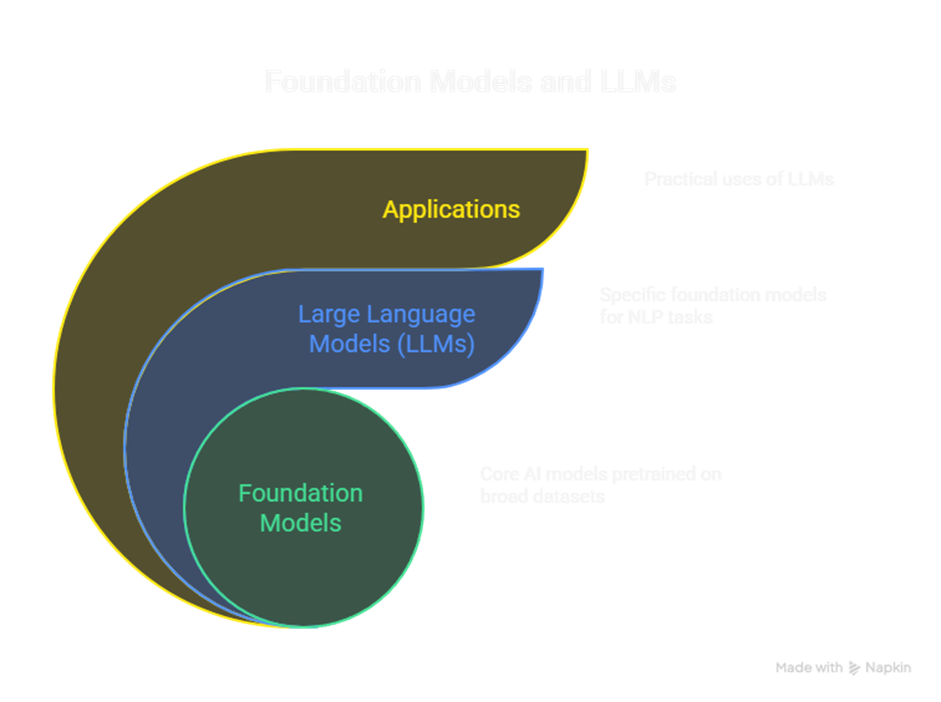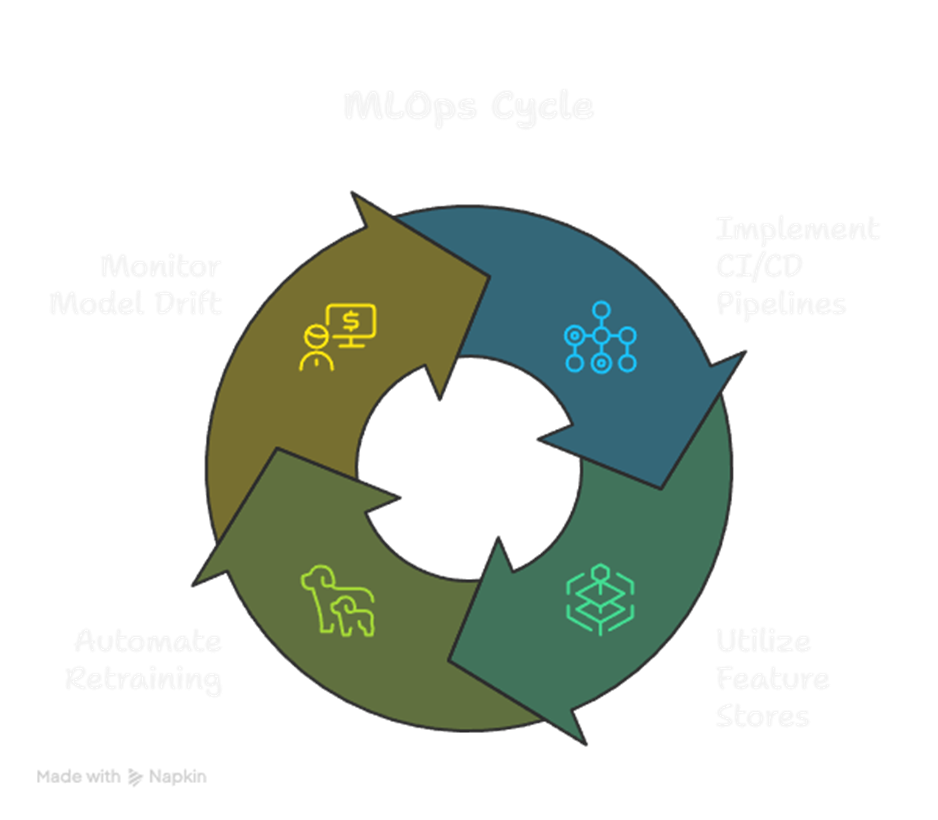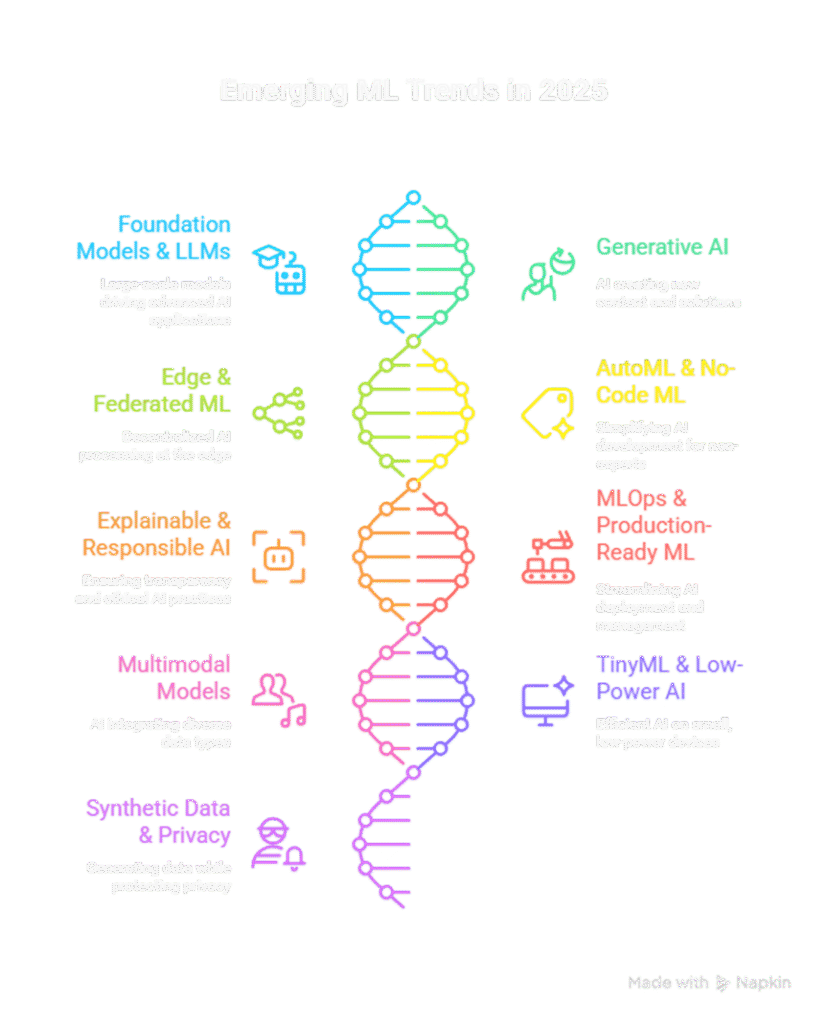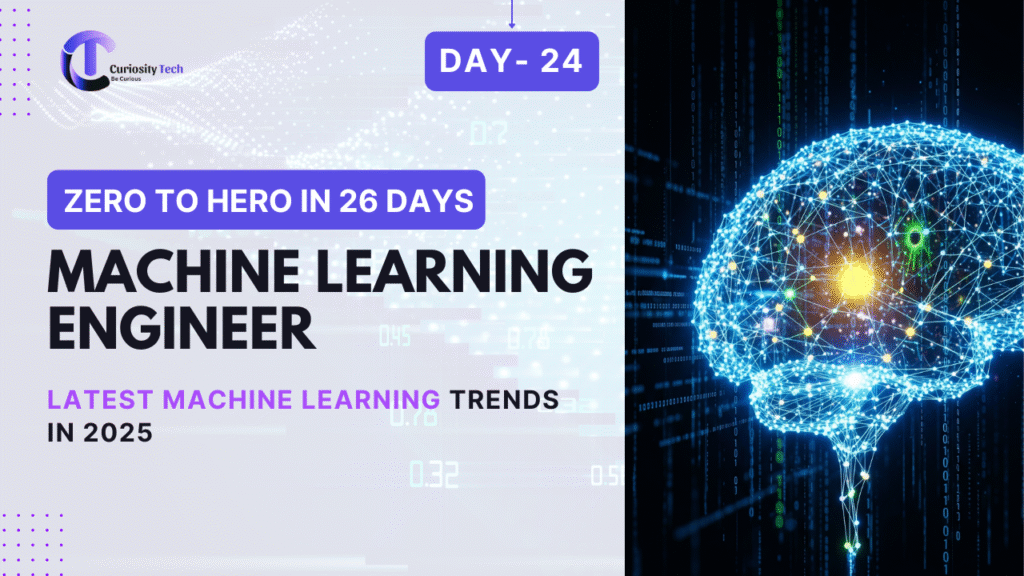Introduction
Machine learning in 2025 has evolved rapidly, with new trends shaping how organizations leverage AI. From foundation models to generative AI and edge ML, staying updated is crucial for ML engineers to remain industry-relevant and future-ready.
At CuriosityTech.in (Nagpur, Wardha Road, Gajanan Nagar), learners are exposed to cutting-edge trends, hands-on tools, and real-world projects that reflect the latest advancements in ML.
Trend 1: Foundation Models & Large Language Models (LLMs)
Definition: Foundation models are pretrained at scale on broad datasets and can be adapted for multiple downstream tasks. LLMs like GPT-4, GPT-5, and BLOOM are transforming NLP, chatbots, and code generation.
Applications:
- Conversational AI and chatbots
- Content generation and summarization
- Code assistants and programming help

CuriosityTech Insight: Riya fine-tunes a GPT-based model for domain-specific customer support, significantly reducing response times.
Trend 2: Generative AI
Definition: Generative AI creates new content such as images, text, audio, and video based on learned patterns.
Applications:
- AI-generated marketing content
- Synthetic data generation for ML training
- Creative industries: art, design, music
Emerging Tools:
- DALL·E 3, MidJourney, Stable Diffusion
- ChatGPT Enterprise for text generation
- Runway ML for multimedia content
Scenario Storytelling:
Arjun uses Stable Diffusion to generate realistic product images for e-commerce, enabling rapid prototyping and marketing campaigns.
Trend 3: Edge & Federated Machine Learning
Definition: Edge ML runs models on local devices instead of centralized servers, while federated ML enables collaborative training across devices without sharing raw data.
Applications:
- Autonomous vehicles
- IoT devices and smart sensors
- Privacy-preserving ML for healthcare and finance
CuriosityTech Insight: Learners at CuriosityTech implement federated learning simulations to train models without transferring sensitive data.
Trend 4: AutoML and No-Code ML Platforms
Definition: AutoML automates model selection, hyperparameter tuning, and feature engineering, enabling faster ML development.
Applications:
- Rapid prototyping for enterprises
- Democratization of ML for non-engineers
- Workflow optimization in production
Popular Platforms:
- Google Cloud AutoML
- H2O.ai AutoML
- Microsoft Azure ML Automated ML
Scenario:
Riya automates a fraud detection pipeline using AutoML, reducing model development time from weeks to hours.
Trend 5: Explainable AI (XAI) & Responsible AI
Definition: XAI ensures transparency in model predictions, addressing bias and regulatory compliance.
Applications:
- Finance: explainable loan approvals
- Healthcare: interpretable diagnosis predictions
- Governance: AI accountability and auditing
Tools & Methods:
- SHAP, LIME for model interpretability
- Bias detection frameworks: AIF360, Fairlearn
Scenario Storytelling:
Arjun integrates SHAP values into a credit scoring model, providing interpretable insights for financial regulators.
Trend 6: MLOps & Production-Ready ML
Definition: MLOps focuses on operationalizing ML, ensuring models are scalable, monitored, and continuously updated.
Key Practices:
- CI/CD pipelines for ML
- Feature stores for consistent data
- Automated retraining and drift monitoring

CuriosityTech Insight: Students implement end-to-end MLOps pipelines, integrating cloud ML platforms, monitoring dashboards, and retraining workflows.
Trend 7: Multimodal Models
Definition: Multimodal models process multiple data types simultaneously, e.g., text, images, and audio.
Applications:
- Visual question answering
- Video summarization with audio cues
- Multimodal recommendation engines
Example Tools:
- OpenAI GPT-4 with vision capabilities
- CLIP (Contrastive Language-Image Pretraining)
- Flamingo from DeepMind
Trend 8: TinyML & Low-Power AI
Definition: TinyML focuses on running ML models on low-power, constrained devices like microcontrollers.
Applications:
- Smart home devices
- Wearable health monitors
- Environmental sensors
Scenario:
Riya deploys a TinyML model on an Arduino device to detect environmental anomalies with minimal power consumption.
Trend 9: Responsible Data & Synthetic Data Generation
- Synthetic Data: Creating realistic data to augment training datasets
- Data Privacy: Regulatory compliance with GDPR, HIPAA
- Bias Mitigation: Ensuring datasets represent real-world diversity
CuriosityTech Insight: Learners generate synthetic datasets for healthcare models, allowing training without exposing patient information.
Infographic: Emerging ML Trends 2025

Visual Description: Central node “ML Trends 2025” with branches to each trend, highlighting applications and tools for each.
Key Takeaways
- Foundation models and LLMs are transforming NLP and AI capabilities
- Generative AI is revolutionizing creative industries
- Edge & federated learning ensure privacy and real-time applications
- AutoML and MLOps enable faster, production-ready ML workflows
- Explainable AI and responsible AI are mandatory for ethical deployment
- Hands-on experimentation at CuriosityTech.in ensures ML engineers are industry-ready
Conclusion
Machine learning trends in 2025 emphasize scalability, efficiency, ethics, and creativity. Mastering these trends requires continuous learning, hands-on experimentation, and staying updated with emerging technologies.
At CuriosityTech.in, learners explore foundation models, AutoML, TinyML, federated learning, and generative AI through projects and workshops, preparing for cutting-edge industry roles. Contact +91-9860555369 or contact@curiositytech.in to stay ahead in the ML revolution.

